The National Order of the Legion of Honour, formerly the Royal Order of the Legion of Honour is the highest French order of merit, both military and civil. Established in 1802 by Napoleon Bonaparte, it has been retained by all later French governments and régimes.
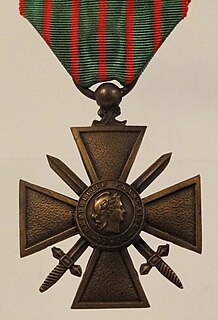
The Croix de Guerre is a military decoration of France. It was first created in 1915 and consists of a square-cross medal on two crossed swords, hanging from a ribbon with various degree pins. The decoration was first awarded during World War I, again in World War II, and in other conflicts; the Croix de guerre des théâtres d'opérations extérieures was established in 1921 for these. The Croix de Guerre was also commonly bestowed on foreign military forces allied to France.
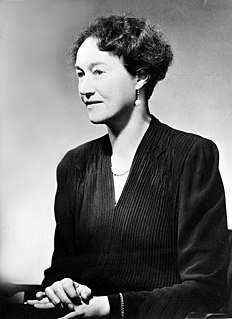
Charlotte reigned as Grand Duchess of Luxembourg from January 1919 until her abdication in November 1964.
To be mentioned in dispatches describes a member of the armed forces whose name appears in an official report written by a superior officer and sent to the high command, in which their gallant or meritorious action in the face of the enemy is described.

The Military William Order, or often named Military Order of William, is the oldest and highest honour of the Kingdom of the Netherlands. It is named after St. William of Gellone (755–814), the first Prince of Orange. Its motto is Voor Moed, Beleid en Trouw. The chivalric order was established on 30 April 1815 by King William I and was presented for feats of excellent bravery on the battlefield and as a meritorious decoration to senior military officers. Comparable with the French Légion d’Honneur but far less often awarded, it is open to everyone regardless of rank or nobility—not only to Dutch military, but also to foreigners. To date, membership in the Order is extremely rarely awarded, and only for exceptional bravery in battle.

The fourragère is a military award, distinguishing military units as a whole, in the form of a braided cord. The award was first adopted by France, followed by other nations such as the Netherlands, Belgium, Portugal, and Luxembourg. Fourragères have been awarded to units of both national and foreign militaries, except for that of Luxembourg, which has not been awarded to any foreign units.
Authorized foreign decorations of the United States military are those military decorations which have been approved for wear by members of the United States armed forces but whose awarding authority is the government of a country other than the United States.
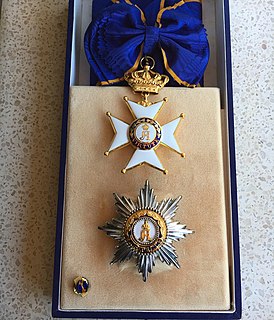
The Order of Civil and Military Merit of Adolph of Nassau is an order of merit of the Grand Duchy of Luxembourg for meritorious service to the Grand Duke, the Grand-Ducal House and Luxembourg. It was founded in 1858 as a chivalric order of the Duchy of Nassau by Adolphe of Nassau in honor of his namesake and ancestor, Adolf, Count of Nassau, the only member of the House of Nassau to have been Roman King of Germany. After the Duchy of Nassau was annexed by Prussia in 1866 and Adolphe became Grand Duke of Luxembourg in 1890, he revived the order as an order of merit.

The 39th Infantry Regiment is a parent regiment in the United States Army. Originally organized for service in World War I, the 39th fought in most of the conflicts involving the United States during the 20th century, and since 1990 the 2nd Battalion has served as a training unit stationed at Fort Jackson, South Carolina. The 3rd Battalion was started on 21 October 2015 and a 4th Battalion was added in July 2017.
The Croix de guerre 1914–1918 is a French military decoration, the first version of the Croix de guerre. It was created to recognize French and allied soldiers who were cited for valorous service during World War I, similar to the British mentioned in dispatches but with multiple degrees equivalent to other nations' decorations for courage.
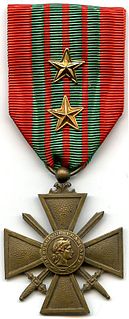
The Croix de guerre 1939–1945 is a French military decoration, a version of the Croix de guerre created on 26 September 1939 to honour people who fought with the Allies against the Axis forces at any time during World War II.

The Cross for Military Valour is a military decoration of France. It recognises an individual bestowed a Mention in Dispatches earned for showing valour in presence of an enemy, in theatres of operations which are not subject to the award of the Croix de guerre des théâtres d'opérations extérieures. The Cross for Military Valour is usually awarded for security or peacekeeping operations, always outside the French territory.
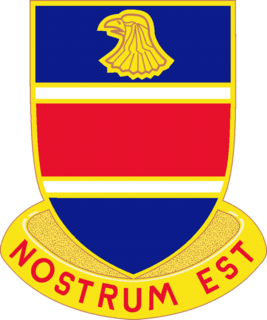
The 326th Engineer Battalion is one of three air assault engineer battalions in the United States Army. The 326th is part of the 1st Infantry Brigade Combat Team ("Bastogne")(♣), 101st Airborne Division and has been a part of the 101st since World War I.
The Croix de guerre (French) or Oorlogskruis (Dutch), both literally translating as "Cross of War", is a military decoration of the Kingdom of Belgium established by royal decree on 25 October 1915. It was primarily awarded for bravery or other military virtue on the battlefield. The award was reestablished on 20 July 1940 by the Belgian government in exile for recognition of bravery and military virtue during World War II. The post-1940 decoration could also be awarded to units that were cited. The decoration was again reestablished by royal decree on 3 April 1954 for award during future conflicts.

The German invasion of Luxembourg was part of Case Yellow, the German invasion of the Low Countries—Belgium, Luxembourg and the Netherlands—and France during World War II. The battle began on 10 May 1940 and lasted just one day. Facing only light resistance, German troops quickly occupied Luxembourg. The Luxembourgish government, and Grand Duchess Charlotte, managed to escape the country and a government-in-exile was created in London.
Guillaume Konsbruck was a Luxembourgian military officer, politician, and manager of the steel company Arbed.
Cross of Honour and Military Merit is a military decoration of Luxembourg established by Charlotte, Grand Duchess of Luxembourg in May 1951. The cross is awarded for distinguished service to the military in times of peace. In times of war the cross is awarded for outstanding acts of courage and bravery. The cross is awarded in three classes gilt, silver, and bronze.

Émile Speller was a Luxembourgish military officer and the commander of the country's Gendarmes and Volunteers Corps during the German invasion of Luxembourg in World War II. He also served as aide-de-camp to several members of the Grand Ducal Family throughout his career and chamberlain of the Grand Ducal court.
The Croix de Guerre is a military decoration of France. It was first created in 1915 and consists of a square-cross medal on two crossed swords, hanging from a ribbon with various degree pins. The decoration was awarded during World War I, then revived for World War II, and from 1921 had another version for other conflicts. The Croix de Guerre was also commonly bestowed on foreign military forces allied to France.
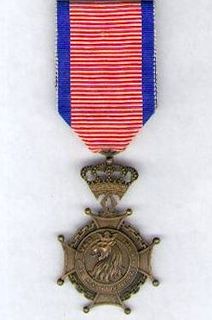
The Order of the Resistance 1940–1944 is a civil decoration of the Luxembourg. Established by Charlotte, Grand Duchess of Luxembourg by decree on March 30, 1946, the order recognizes civilians who, in the German occupation of Luxembourg during World War II, distinguished themselves particularly in the service of the national or allied cause, or by brilliant acts of resistance, courage, and dedication. Those recognized could be awarded a cross or a medal by the monarch of Luxembourg with the recommendation of the Prime Minister and the Council for the Remembrance of the Resistance. In 2003, it was determined that the cross could only be awarded posthumously and the medal would no longer be awarded.













